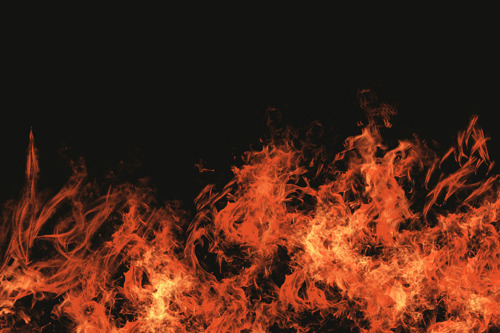
The impact of Amendment 4:2026 on the 18th Edition of the IET Wiring Regulations
By: Geoff Cronshaw CEng FIET
We look at the impact of changes expected in Amendment 4 of BS 7671:2018+A2:2022+A3:2024 (the IET Wiring Regulations, 18th Edition) will have on the design, erection and verification of electrical installations.
Please note, the following are draft proposals only at this stage and may or may not be included in Amendment 4 depending on the decision of the national committee, JPEL/64. The DPC (Draft for Public Consultation) is open from 7 August 2024 to 3 November 2024. Comments on the DPC for Amendment 4 can be submitted through BSI’s Standards Development portal during this consultation period. Amendment 4 is expected to be published in 2026.
Why issue another amendment?
The IET Wiring Regulations (BS 7671) is based on European standards, which in turn, are generally based on international standards. Standard development is an ongoing process to take account of new technology and product development. As the UK are members of CENELEC (the European standards body), we must take account of new harmonized documents in our national standard (BS 7671). Also, the national standard must take account of UK legislation (e.g. the Building Safety Act).
What’s included?
Proposals include a new:
- Section 545, Functional earthing and functional-equipotential- bonding for information communication technology equipment and systems (ICT), such as broadcast, communication technology and computer network systems.
- Chapter 57, Stationary secondary battery installations.
- Section 716, Distribution of ELV DC power using balanced, information technology cables and accessories primarily designed for data transmission. Detailed requirements on low voltage generating sets.
In addition, there are updates throughout BS 7671, including changes to:
- Requirements for medical locations
- Requirements for firefighter’s switches
- Chapter 65 concerning periodic inspection and testing, etc.
This article aims to cover most of the main changes. Please refer to the DPC for all the changes.
Chapter 52 Selection and erection of wiring systems

Regulation 521.5.1 concerns ferromagnetic enclosures and electromagnetic effects.
The current regulation states that “The conductors of an AC circuit installed in a ferromagnetic enclosure shall be arranged so that all line conductors and the neutral conductor, if any, and the appropriate protective conductor are contained within the same enclosure.” The regulation goes on to say that “Where such conductors enter a ferrous enclosure, they shall be arranged such that the conductors are only collectively surrounded by ferromagnetic material.” The reason is that an alternating current induces an alternating magnetic field, which is increased if the conductor is surrounded by a ferrous metal enclosure, and this may result in eddy currents being circulated in the enclosure causing a rise in temperature.
This regulation has now been redrafted and a note has been added to clarify the requirements (extract below):
NOTE: For low voltage switchgear and controlgear assemblies to the BS EN IEC 61439 series, conductors in AC circuits with a current rating not exceeding 200 A can pass through separate holes etc. in ferromagnetic enclosures, sections, or plates. Currents above 200 A where conductors pass through separate holes in ferromagnetic material, need to have been verified by temperature-rise test(s).
Regulation 521.10 deals with installation of cables
Regulation 521.10.202 states that “Wiring systems should be supported such that they will not be liable to premature collapse”. This regulation was introduced to prevent wiring systems from hanging, which may hinder evacuation or obstruct firefighting activities in the event of a fire. The key words are “premature collapse”. Since its introduction, the regulation has raised several questions and therefore it has been decided to introduce a note explaining the intent of this regulation and to clarify that it is not the intent of this regulation to provide support to maintain circuit integrity of life safety and firefighting applications under fire conditions (which are addressed in Chapter 56 and BS 5839, BS 5266, and BS 8519).

Regulation 522.6 deals with impact
It is important that wiring systems are selected and erected to minimize the damage arising from mechanical stress, for example, by impact, abrasion, penetration, tension or compression during installation, use or maintenance.
The requirements of Regulation 522.6 (a cable installed in a wall or partition) have been reorganized into a table for improved clarity, but it is understood that the requirements have not been changed.
Section 536 Coordination of electrical equipment for protection, isolation, switching and control
Regulation 536.4.202 has been redrafted and now covers the coordination between low voltage switchgear and controlgear assembly and the overload protective device. The regulation now contains load curtailment as one of the conditions to be satisfied.
Section 537 Isolation and switching
Regulation 537.4.2 has been redrafted and firefighter's switches are now required in locations specified by the fire engineer to support the building’s overall fire strategy. The regulation now gives examples where these are required, including outdoor lighting operating at high voltage and indoor discharge lighting operating at high voltage. In addition, Regulation 537.4.2.1 has been deleted. Also 537.4.4 has been modified slightly.
Section 545 Functional earthing and functional-equipotential-bonding for information and communication technology equipment and systems (ICT)
A new section 545 has been introduced, giving additional requirements for functional earthing and functional-equipotential-bonding for information communication technology equipment and systems (ICT), such as broadcast, communication technology and computer network systems. A clear distinction between functional earthing and protective earthing is made in this section as it is important that any interruption of the functional earthing does not impair the protective earthing. Section 545 includes requirements for minimum cross-sectional area, identification, electrical continuity of functional bonding conductors, combined protective and functional bonding conductors, main functional earthing terminal, and equipotential bonding ring conductors.
Section 551 Low voltage generating sets

Section 551 covers generators with several supply arrangements. Regulation group 551.7 sets out additional requirements for installations where the generating set may operate in parallel with other sources, including systems for distribution of electricity to the public. In this situation, it is very important that where energy flow is bidirectional, the correct type of protective device is installed.
Good workmanship and proper materials should always be used. To comply with this requirement, the installation of electrical equipment must take account of the manufacturer’s instructions as stated in both Regulation 134.1.1 and Regulation 510.3.
To clarify the requirements in this situation, Regulation 551.7.1 has been redrafted. An indent (c) has been added, which requires a suitable protective device where energy flow is bidirectional.
In addition, an indent (d) has been added which prohibits the connection of a source to the load side of an RCD under certain conditions.
Regulation 551.7.2 has been redrafted to form two regulations. Regulation 551.7.2.1 requires the generating set to be installed on the supply side of all the protective devices and requires stationary batteries (Chapter 57) to be considered a generating set and not a load.
Regulation 551.7.2.2 sets out the requirements for the low voltage switchgear and controlgear assembly when a generating set is used as an additional source of supply in parallel with another source and the generating set is connected via low voltage switchgear.
Regulation group 551.8 deals with the requirements for installations incorporating stationary batteries. The requirements for stationary batteries have been transferred to a new Chapter 57 and therefore this group of regulations have been deleted as part of Amendment 4.
Chapter 56 Safety services
Chapter 56 covers general requirements for safety services, selection and erection of electrical supply systems for safety services and electrical safety sources. Standby electrical supply systems are outside the scope. Regulation group 560.6 sets out the requirements for electrical sources. This section has been modified extensively as a result of the new Chapter 57 (Secondary batteries) being introduced.
Chapter 57 Stationary secondary batteries
A new Chapter 57 has been introduced. This deals with requirements for stationary secondary battery installations where the designed purpose is for storage and supply of electrical installations. The chapter does not apply to ones incorporated into products covered by product safety standards and within systems, such as pluggable uninterruptable power supplies, fire and emergency lighting systems, and central safety power supply systems conforming to the appropriate standards.
The chapter sets out the main characteristics of secondary batteries, including the battery type and capacity to be selected, considering such issues as nature of demand, battery voltage, load profiles etc. Also, requirements for selection and erection of electrical equipment, including protective earthing, protection against electric shock, protection against thermal effects and other hazards, together with identification and notices.
In particular, Regulation 570.6.7.203 states that stationary secondary batteries in dwellings are to be installed in accordance with PAS 63100. In other buildings, the location of storage batteries and fire protection requirements shall be selected taking into account the fire safety risk assessment of the premises.
Chapter 65 Periodic inspection and testing
Regulation 653.1 now requires the notes for the person producing the report (provided in Appendix 6) to be taken into account on the Condition Report.
Regulation 653.2 now requires the report to include guidance for the recipient(s) based on the model in Appendix 6. A note has also been added pointing out that photographic and/or thermographic images can be appended to the report.
Section 716 Power over ethernet

A new Section 716 has been introduced. This deals with requirements for the distribution of ELV DC power using balanced information technology cables and accessories primarily designed for data transmission, as specified in BS EN 50173-1 using power feeding sourcing equipment in accordance with BS EN 62368-3. Requirements are included for the design, erection and verification of telecommunications infrastructure for the purpose of both telecommunications and distribution of ELV DC power feeding. In addition, requirements are included for use of existing telecommunications infrastructure for distribution of ELV DC power.
Section 710 Medical locations

Requirements throughout Section 710 have been substantially expanded to provide more clarity.
The regulations concerning power supplies in medical locations of group 2 have been redrafted to avoid loss of power due to a single fault.
The requirements for medical insulation monitoring devices have been extended and modified. In addition, requirements concerning supplementary equipotential bonding have been modified and extended. Furthermore, a new Annex B710 model form to record supplementary bonding connection resistances.
Chapter 81 Low-voltage electrical installations Part 8-1: Functional aspects – Energy efficiency
A new Chapter 81 concerning energy efficiency has been introduced. This chapter refers the reader to the Building Regulations for England and Wales, Scotland and Northern Ireland for guidance on the requirements. The chapter also refers the reader to BS HD 60364-8-1:2019 Low-voltage electrical installations Part 8-1: Functional aspects – Energy efficiency.
Appendices
There are several changes in the appendices, and I have highlighted Appendix 4, 6, 13 and 17 below.
Appendix 4
There have been some additions to Appendix 4 concerning data for buried cables in ducts.
Appendix 6
The notes for the person producing the condition report have been redrafted. Items have been rearranged for clarity. Several changes have been made, including confirmation that the signatures on the report are those of the person(s) executing the work of inspection and testing and authorizing the report for issue. Also, for the EICR, it is clarified that issuing an FI code for further investigation should not result in an unsatisfactory outcome.
Appendix 13
The guidance in the first part of Appendix 13 (Cables in protected escape routes) has been redrafted to take account of Approved Document B Volumes 1 and 2, BS 9991 and BS 9999, and a fire safety strategy to be prepared by the fire engineer based on appropriate guidance.
Appendix 17
This has been deleted. A new Chapter 81 concerning energy efficiency has been introduced instead.
Conclusion
Please note this article is just a brief overview of some of the changes expected in Amendment 4 of the 18th Edition of the IET Wiring Regulations (BS 7671). For more information, see the DPC which is available to view through BSI’s Standards Development portal.
